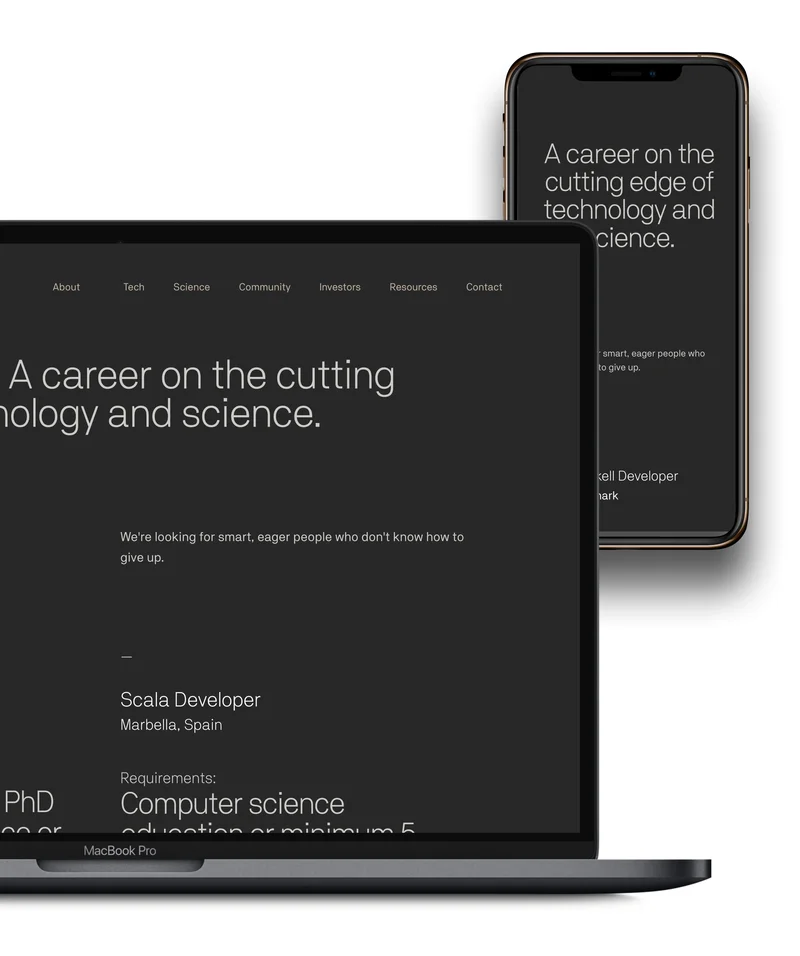Article Directory
So, a token called Concordium (CCD) pumps 360% in three months, and suddenly my inbox is full of people asking if this is the "next Solana." Let's get one thing straight: this isn't the next anything. It's the blockchain equivalent of a kid who got C's in art class suddenly declaring they're going to business school. It’s a pivot born from necessity, not a stroke of genius.
Concordium has been around since 2021, founded by a legit finance guy from Saxo Bank. For years, it just sort of… existed. It was another Layer-1 in a sea of Layer-1s, bragging about its "compliance-readiness" and "protocol-level identity" while the rest of the market was chasing ape JPEGs and food-themed DeFi farms. Nobody cared. Its chart looked like a cardiogram of a sloth.
Then, in 2024, a new CEO, Boris Bohrer-Bilowitzki, comes in from the institutional custody world and decides to stop pretending Concordium is for the degen crowd. This is a brilliant pivot. No, 'brilliant' isn't right—it's a brutally pragmatic, maybe even desperate, pivot. They slapped a new buzzword on it—"PayFi," for "Payment Finance"—and aimed the entire project directly at the one group of people who might actually give a damn about mandatory KYC: bankers.
The Blockchain for People Who Hate Blockchain
Concordium’s whole sales pitch is built on a foundation that makes crypto purists want to vomit. They have a mandatory, built-in identity layer. You can't use this thing without getting verified by one of their approved partners. They use zero-knowledge proofs to keep your data private, but make no mistake: under a Swiss court order, your identity can be revealed. It’s a blockchain with an asterisk.
They call this "privacy-preserving," which is corporate-speak for "we know who you are, but we promise not to tell unless the government makes us."
This is the central tension of Concordium. Is this a feature or a fatal flaw? For the anarcho-capitalist, cypherpunk crowd that formed the bedrock of crypto, this is a non-starter. A kill switch. A backdoor. But for a bank, a stablecoin issuer, or a money market fund trying to navigate the hellscape of global financial regulations? It might just be the holy grail.
Their "Protocol-Level Tokens" (PLTs) are another piece of this puzzle. Instead of relying on potentially buggy smart contracts written by some 22-year-old in a hoodie, tokens are issued directly at the consensus layer. This makes them more secure and cheaper to transact. You can bake in rules like geofencing or whitelists right into the token itself. Again, for a DeFi degen, this is censorship. For BlackRock? It’s a feature. They’re building a walled garden, but the walls are made of regulatory compliance and the gatekeepers are wearing suits.

But does this surgically targeted approach actually have a future? Are institutions really beating down the door for a blockchain solution, or is this just another case of a project building something technically impressive that nobody asked for?
Speaking of entities named Concordia making questionable decisions, it reminds me of that whole mess with Concordia University. The school tried to cut its women's swimming and tennis teams to save a measly $550,000, while pouring $25 million into new athletic facilities. A judge eventually had to step in, leading to a ruling where Concordia University told to reinstate women’s teams while Title IX lawsuit plays out. It just goes to show that having a fancy name and a mission statement doesn't mean you're making smart choices. It's all about where the money flows, and whether you're serving your actual users or just the administration. Same story, different industry.
The Hype Train Finally Leaves the Station
So what's behind the recent price action? The question of Why is Concordium (CCD) price rising? has a few answers. A NASDAQ-listed firm, Hilbert Group, made a "strategic investment," which is the first time they've bought anything besides BTC and ETH. That's a huge vote of confidence, or at least a signal that the serious money is starting to notice. Then they started racking up partnerships like they were collecting Pokémon cards: stablecoin issuers like StablR and Aryze, a tokenized money market fund called Spiko with a supposed $400M in AUM, and wallet integrations with Ledger and Coin98.
They're trying to build an ecosystem from the top down. Get the big money and the infrastructure in place, and hope the users will follow. They want to create a "Verify & Pay" system that’s as easy as Apple Pay, where your age or jurisdiction can be confirmed in a single click without handing over your entire life story. It’s a clean, sterile vision of Web3. They want to be the plumbing for a regulated digital economy.
The problem is, plumbing ain't sexy. No one gets rich speculating on plumbing. Or do they? The recent price action, fueled by a viral tweet about Hilbert accumulating, suggests otherwise. The market is desperate for a new narrative now that the AI hype is cooling off, and "regulation-friendly TradFi chain" seems to be next on the menu.
But I have to ask: what happens when the hype dies down? What happens when people realize that a chain built for institutions moves at an institutional pace—which is to say, glacially? This project’s success depends entirely on whether legacy finance actually adopts this stuff at scale, not on a handful of partnerships and a speculative price pump. They want to be the bridge between TradFi and DeFi, but most bridges in crypto end up going nowhere. They're building a beautiful, multi-lane highway into a forest, hoping someone will eventually build a city on the other side. Offcourse, maybe they will.
So, Is This Just a Suit in a Hoodie?
At the end of the day, I'm left with a project that has shed its crypto-native skin to appeal to the old world of money. Concordium is making a calculated bet that the future of blockchain isn't about permissionless freedom, but about permissioned, regulated efficiency. They’ve built a powerful, technically sound engine for a market that may or may not exist yet. It’s either a visionary move to capture a trillion-dollar market, or it's a beautifully engineered solution to a problem nobody has. Right now, it's just a token on a rocket ship, and we all know how that usually ends. I’m watching, but I’m not buying the ticket just yet.


